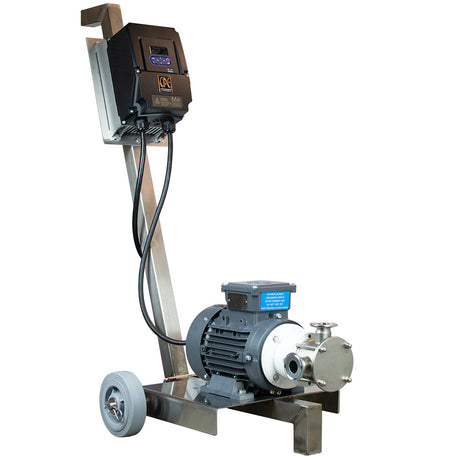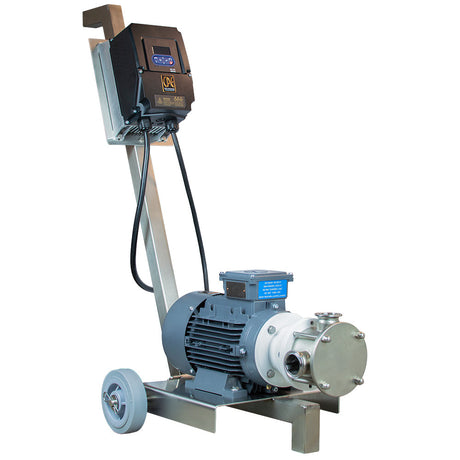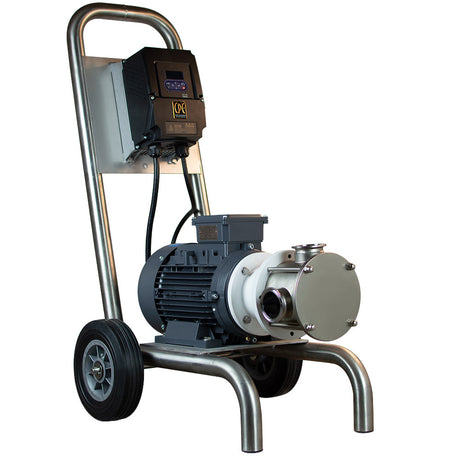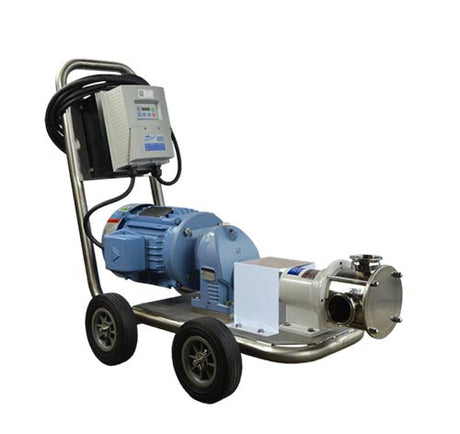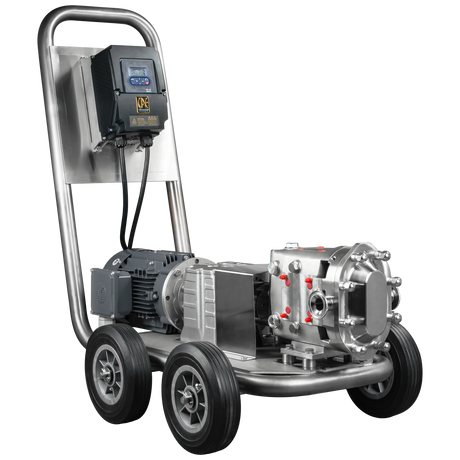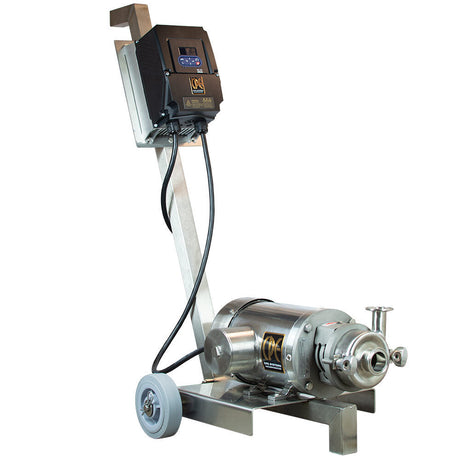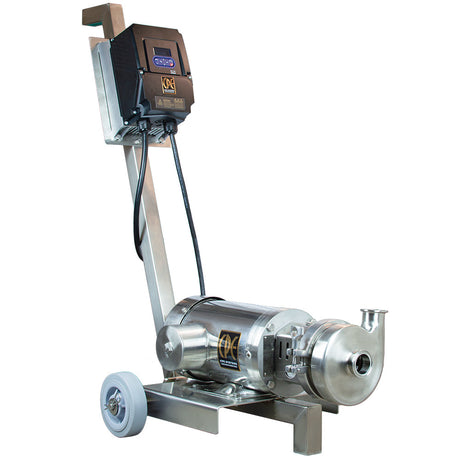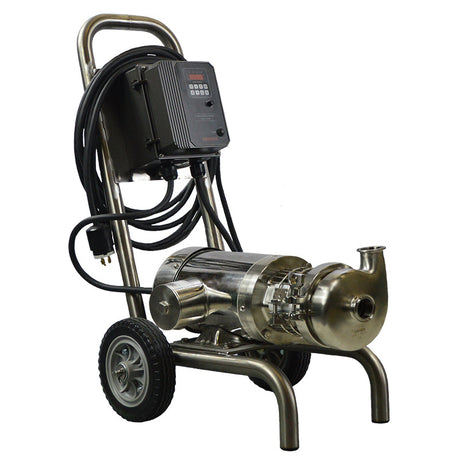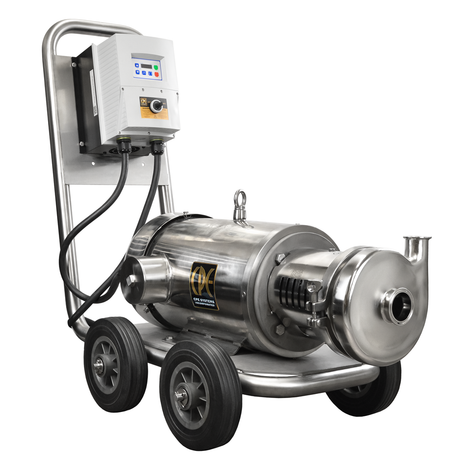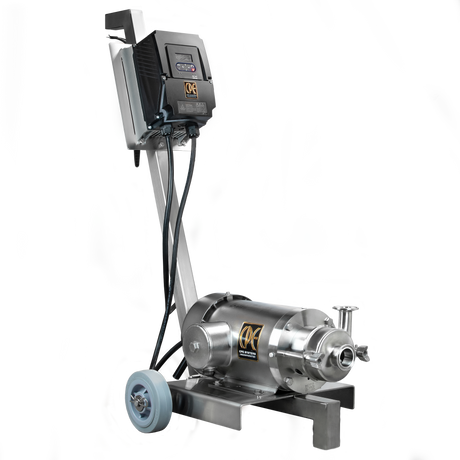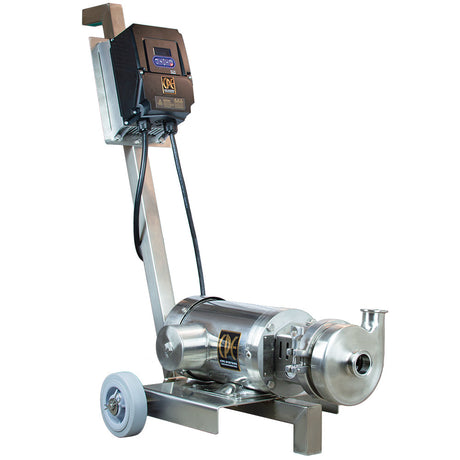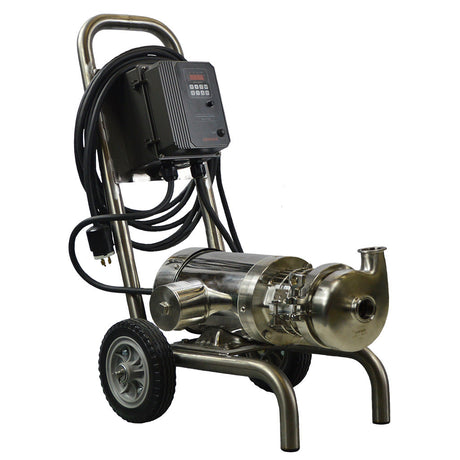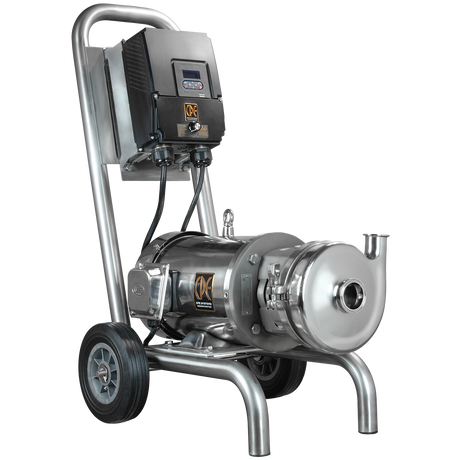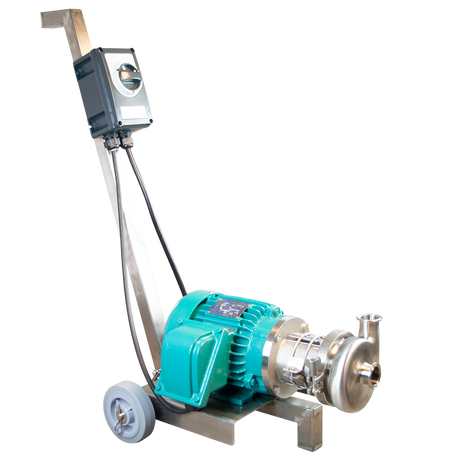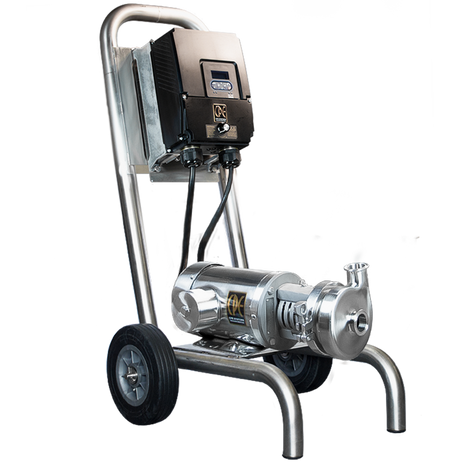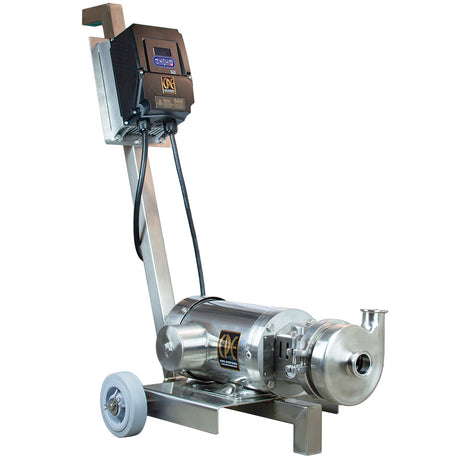When selecting a pump, it is important to know the differences to ensure that it is appropriate for the application at hand. With that being said, we will be comparing centrifugal pumps to positive displacement pumps.
The centrifugal pump has a different working principle from a positive displacement pump. A centrifugal pump transfers kinetic energy from the motor to the liquid by a spinning impeller. As the impeller rotates, it draws in fluid, increasing its velocity and propelling it to the discharge point. Positive displacement pumps move fluid by trapping a fixed volume, typically in a cavity, and then pushing that trapped fluid into the discharge pipe.

Viscosity
If you have shear-sensitive products, such as grapes, you will be better suited with a positive displacement pump. These pumps operate at a low speed, which creates less shear on your products. Their efficiency also increases when handling highly viscous foods because of reduced slippage. Centrifugal pump flow rate rapidly decreases with increasing viscosity, due to frictional losses inside the pump. They typically operate at a high speed, which will cause more shear on your product.
Flow Rate
Change in pressure can result from changing a centrifugal pump’s flow, but that’s not the case for positive displacement pumps. The flow will remain almost constant regardless of the change in pressure. This makes these pumps well-suited for handling viscous products that flow at lower speeds and create more resistance. One of the main reasons positive displacement pumps are not as common as centrifugal pumps is due to their flow/cost ratio; they are simply more expensive. However, when precisely controlled flow rates are desired, positive displacement pumps are the better choice. These pumps tend to be better at handling applications of moderate to high viscosity fluids, high pressures, or variable system conditions.
Centrifugal pumps, on the other hand, will vary in flow depending on the pressure. This makes these pumps ideal for handling non-viscous liquids at a high volume and a relatively low pressure. If required, you can regulate the pressure by placing a control valve on the outflow of the pump, allowing you to throttle the flow as it leaves the pump. However, adding a variable speed control, such as a VFD, is a preferred method of controlling the flow.
Suction-Lift
If suction lift is required in your process, positive displacement pumps are the clear choice. These pumps create a vacuum on the suction side by using a cavity with a changing volume to suck in a specific amount of fluid through an intake line. The cavity's volume is then reduced to push the fluid out at a higher pressure through a discharge line. The centrifugal pump does not create a vacuum, meaning that it cannot lift liquid into the suction port. However, there are specialized self-priming centrifugal pump designs on the market.
Priming
Standard centrifugal pumps typically are not designed to be self-priming. The priming must be done manually, and it must be ensured that the intake pipe is always full of liquid before starting the pump. The liquid enters the pump through its suction inlet, gets separated by one or two impellers, and is then driven towards the pump discharge.
There are self-priming centrifugal pumps on the market that have a built-in liquid reservoir, usually above or in front of the impeller. During the pump’s priming cycle, the reservoir enables the pump to remove air from the pump body and suction line by replacing it with liquid blended with any remaining air.
Self-priming pumps are usually used for applications where gas or air can become trapped in the liquids or when the suction line is not always full of liquid.
BEP
Centrifugal pumps are known for optimal performance near the center of the curve (BEP). It is advised to stay within a window of 80-100% of its BEP. The further they stray from their Best Efficiency Point (BEP), the less efficient the pump will be. This is not the case for Positive Displacement pumps that can operate efficiently at almost any point in the curve.


